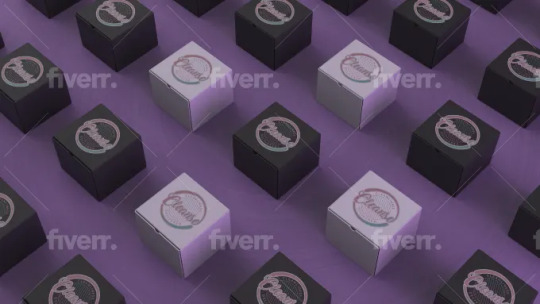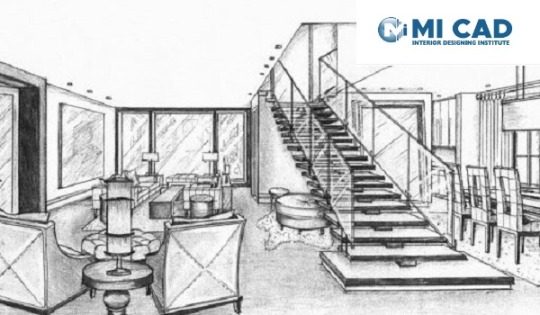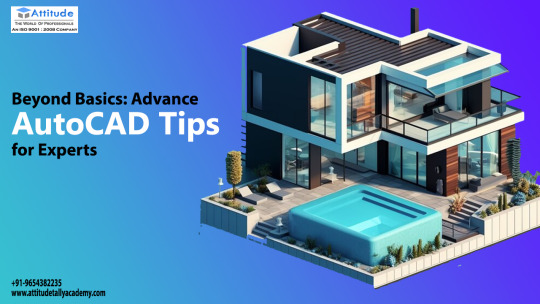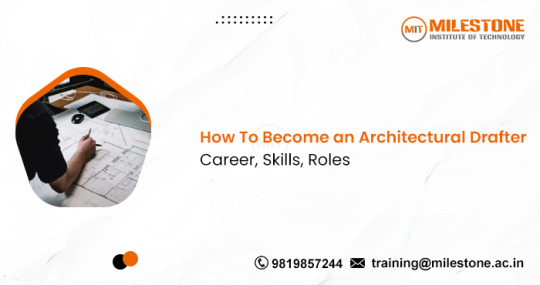#autoCAD techniques
Text
https://velebasacice.tumblr.com/post/692100880188784640/notice-perceuse-bosch-psb-18-li-2-download, https://velebasacice.tumblr.com/post/692101490630967296/la-voie-ferr%C3%A9e-pdf-download-link-vkccc7jkeu.
#http://vk.cc/c7jKeU#nofollow#_blan#<br>#<br> </p><p> </p><p> </p><p>donc de générer des modè- les suffisamment précis Très orientée bâtiment#la solution DesignCAD Pro 6000 est d'un travail en équipe éten-.#Lire attentivement les instructions figurant sur la notice ou sur l'étiquetage avant toute utilisation. Support Hotline dédié. Des professi#Notice d'utilisation#manuel utilisateur#mode d'emploi#Le manuel d'installation ou notice de montage décrit les procédures pour mettre en service#EXE situé dans#et cliquez dur#<p> </p><p> </p><center>DESIGNCAD PRO 6000 MODE D'EMPLOI >> <strong><u><a href= rel= target=\Program files\DesignCAD Pro 9000\Remi#DesignCAD. Pro 7000. Compatible. AutoCADTM. DWG DXF. Dessin 2D. Plans Techniques. Perspective 3D. Elévations Coupes. Solutions Bâtiment par#Designcad pro 6000 mode d'emploi ipad. 南卡中文学校 Chinese School of South Carolina › Forums › Eduma Forum › Designcad pro 6000 mode d'emploi ip#Généralement#cela se produit sur des fichiers DWG importés dans DesignCAD : le fichier AutoCAD d'origine comportait des 'Plans de travail' et vous avez#Fellowes h 1c mode d'emploi samsung galaxy trend#Designcad pro 6000 mode d'emploi four#Nokia bl 5j mode d'emploi samsung galaxy s6#Ipod touch 6 manuel1) Il faut que votre DesignCAD Pro 6000 FR soit installé. épaisseurs#couche de travail#police de caractères#hauteur usuelle et débordement du seuil#</p><br>https://velebasacice.tumblr.com/post/692100880188784640/notice-perceuse-bosch-psb-18-li-2-download#https://velebasacice.tumblr.com/post/692101490630967296/la-voie-ferr%C3%A9e-pdf-download-link-vkccc7jkeu
1 note
·
View note
Text
3d product renderings and mockups

It seems like you're looking for information or assistance with 3D product renderings and mockups. Creating 3D product renderings and mockups is a crucial step in the design and marketing process for various industries. Here's some information to help you get started:
1. Software for 3D Rendering:
Blender: A powerful and free open-source 3D creation suite.
Autodesk Maya: Widely used in the film and video game industry.
Cinema 4D: Known for its intuitive interface and powerful capabilities.
KeyShot: A standalone 3D rendering and animation application.
2. Creating 3D Models:
CAD Software (Computer-Aided Design): Use software like AutoCAD, SolidWorks, or Rhino to create accurate 3D models.
Sculpting Software: Tools like ZBrush or Blender's sculpting features are great for organic shapes.
3. Texturing and Materials:
Apply realistic textures and materials to your 3D model using UV mapping techniques.
Software like Substance Painter or Quixel Mixer can help create detailed and realistic materials.
4. Lighting:
Proper lighting is crucial for realistic renders. Experiment with different light setups to achieve the desired look.
Consider using High Dynamic Range Imaging (HDRI) for realistic environmental lighting.
5. Rendering:
Choose the appropriate rendering engine for your needs (Cycles in Blender, Arnold, V-Ray, etc.).
Adjust rendering settings such as resolution, quality, and output format.
6. Mockup Tools:
Adobe Dimension: Allows you to create realistic 3D mockups and product visualizations.
Placeit: An online platform that lets you create mockups with your designs on various products.
Mockup World: Offers a variety of free and premium mockups for different products.
7. Tutorials and Learning Resources:
Online platforms like Udemy, Coursera, and YouTube offer tutorials on 3D modeling, rendering, and mockup creation.
Join forums and communities like Blender Artists or Polycount for support and feedback.
8. Considerations for Product Mockups:
Understand the target audience and purpose of the mockup.
Pay attention to lighting, shadows, and reflections to make the mockup realistic.
Test the mockup on different backgrounds to ensure versatility.
9. Outsourcing:
If creating 3D models and renders is outside your expertise, consider outsourcing to professional 3D artists or agencies.
Remember to practice and experiment with different techniques to refine your skills. The field of 3D rendering is vast, and continuous learning is key to staying updated with the latest trends and technologies.




#shirts#shirt design#artist shirts#tees#tshirts#toby's beans#coffee cat#sundew farms#sunflower fox#sugarbritches#apple orchard#vintage logos#logo design#shop#merch#countrycore#farmcore#cottagecore#fashion#my art#horror#slashers#graphic design#the conjuring#the conjuring 3#the conjuring: the devil made me do it#scream#scream 1996#a nightmare on elm street#anoes
2 notes
·
View notes
Text

We've recently acquired dozens of STEM titles, with an emphasis on study guides and computer programming. Here's a sample of our latest additions!
Mathematics
Testimonios: Stories of Latinx and Hispanic Mathematicians
Mathematics for ESL Learners
Painless Pre-Algebra
The Manga Guide to Linear Algebra
Painless Geometry
Trigonometry: A Complete Introduction
Must Know High School Trigonometry
Trigonometry: With Calculator-Based Solutions
Painless Calculus
Painless Statistics
General Science
Scientific Writing = Thinking in Words
Too Big for a Single Mind: How the Greatest Generation of Physicists Uncovered the Quantum World
Physics: An Illustrated Guide for All Ages
El Libro de la Fisica
Biology: An Illustrated Guide for All Ages
Painless Biology
Chemistry: An Illustrated Guide for All Ages
Painless Earth Science
Computer Science
The Pattern on the Stone: The Simple Ideas That Make Computers Work
Introducing Microsoft Access Using Macro Programming Techniques: An Introduction to Desktop Database Development by Example
AutoCAD for Dummies
Network Security: Private Communication in a Public World
Gray Hat Hacking: The Ethical Hacker's Handbook
Practical Linux DevOps: Building a Linux Lab for Modern Software Development
Java 17 for Absolute Beginners: Learn the Fundamentals of Java Programming
You can use the "What's New" section of our catalog to browse all of our latest items! Current Columbus State students and employees can check out items using a photo ID.
6 notes
·
View notes
Text
My Skills and weaknesses
I have always wanted to start my own furniture building business and I know that that requires tremendous amounts of skills. I first found my love of woodworking while in grade 7 when I had the opportunity to take woodshop and instantly loved the creativity of the woodworking projects. I continued with woodshop all the way until grade 12 and then diverted from that path for a few years to take environmental sciences at Fleming college. When Covid struck I moved back home and decided to take a different program all together and enrolled in Carpentry and renovation techniques at Niagara College. Throughout the 8 years of woodworking experience I have picked up on many different skills that will help me in this endeavor like the design process. I have always really enjoyed working with CAD and have seen my skills with it grow and am now rather comfortable with designing different projects in a few different softwares such as Autodesk Inventor and AutoCAD. I have also picked up on many building techniques like how to process rough sawn lumber and how laminate that wood together. I have picked up on the skills required to use woodworking tools such as a router/router table, jointers, planers, and many different types of saws.
I do however lack a few crucial skills to running a business like knowing how to run a business. I also tend to have poor time management skills and often leave things until the last minute. I also tend to get too focused on one thing, especially if it is really annoying me and I can’t work it out. I’m often too kind and have a hard time saying no to people which has come back to bite me a few times. I can get rather overwhelmed when I see how difficult something is and will often choose to just ignore it instead. I have seen first hand how difficult it is to run a business when my parents suddenly had to start running my grandfather’s limestone importing business when he became too old to do it himself.
2 notes
·
View notes
Text
How to Become an AutoCAD Expert in Mechanical Engineering
AutoCAD is one of the most widely used software tools in the field of mechanical engineering. It is a computer-aided design (CAD) software that enables engineers to create, edit, and analyze mechanical designs. If you are interested in becoming an AutoCAD expert in mechanical engineering, there are several steps you can take to improve your skills and knowledge. In this blog post, we will discuss some of the key steps you can take to become an AutoCAD expert.
Step 1: Learn the Basics
Before you can become an AutoCAD expert, you need to start with the basics. This means understanding the basic commands and functions of the software. You should also learn how to create and edit basic 2D and 3D designs. There are many online tutorials and courses available that can help you learn these basics.
Step 2: Practice, Practice, Practice
Once you have a basic understanding of AutoCAD, the next step is to practice using the software. The more you use AutoCAD, the more comfortable and proficient you will become. Practice creating different types of designs, experimenting with different commands and functions, and exploring the various features of the software.
Step 3: Take Advanced Courses
To become an AutoCAD expert, you need to go beyond the basics. There are many certification courses for mechanical engineers and tutorials available that can help you learn advanced commands, functions, and techniques. These courses will help you develop a deeper understanding of the software and how it can be used to create complex mechanical designs.
Step 4: Stay Up-to-Date
AutoCAD is constantly evolving, with new features and updates being released on a regular basis. To stay at the forefront of the industry, it is important to stay up-to-date with the latest developments in AutoCAD. This means regularly reading industry publications, attending conferences, and participating in online forums and discussions.
Step 5: Gain Real-World Experience
Finally, to become an AutoCAD expert, you need to gain real-world experience. This means working on real projects and collaborating with other professionals in the field. By working on real-world projects, you will gain valuable experience and develop a deeper understanding of how AutoCAD is used in mechanical engineering.
In conclusion, becoming an AutoCAD expert in mechanical engineering requires dedication, hard work, and a commitment to learning. By following these steps, you can improve your skills and knowledge, and become a sought-after professional in the field of mechanical engineering.
4 notes
·
View notes
Text
Scan-to-BIM - Get your 3D Revit Model from an existing building for your digital planning methodology called Building Information Modeling (BIM). Space Survey offers Scan to BIM service in London using advanced 3D laser scanning techniques. Visit the website or dial 020 3287 6610 for more information email [email protected]
2 notes
·
View notes
Text
Building Information Modeling (BIM) courses offer comprehensive training on the latest digital construction techniques, transforming how architects, engineers, and construction professionals design and manage projects. These courses cover fundamental to advanced levels, encompassing software proficiency in tools like Revit, Navisworks, and AutoCAD. Students learn to create detailed 3D models, manage project data, enhance collaboration, and streamline workflows.BIM courses are ideal for professionals seeking to improve project efficiency, reduce costs, and achieve higher standards of sustainability and safety.
#bim training courses#bim courses in kerala#cadbim centre#mep courses in trivandrum#mep courses#bim courses in trivandrum
0 notes
Text
Key Topics Taught Under Interior Designing Institute
Interior design is a multifaceted field that combines creativity, technical skills, and practical knowledge. The part-time diploma in interior design institute offers everyone excellent quality interior designing programs under the supervision of experts. Today, in this article, we are going to shed some light on various subjects and skills typically taught in interior design.

Key Topics:
Principles and Elements of Design: Understanding balance, contrast, harmony, scale, and proportion.
Color Theory: Study of color wheels, color harmony, and the psychological effects of colors.
Design History: Overview of historical design movements and influential designers.
Layout Design: Creating functional and efficient layouts for residential and commercial spaces.
Traffic Flow: Planning for optimal movement within spaces.
CAD Software: Training on industry-standard software like AutoCAD, SketchUp, and Revit.
Technical Drawing: Creating accurate floor plans, elevations, and sections.
3D Modeling: Developing three-dimensional models to visualize designs.
Material Selection: Understanding different types of materials (wood, metal, glass, etc.) and their properties.
Surface Finishes: Learning about paints, wallpapers, fabrics, and other surface finishes.
Sustainability: Choosing eco-friendly materials and sustainable design practices.
Types of Lighting: Study of ambient, task, accent, and decorative lighting.
Lighting Fixtures: Choosing and placing lighting fixtures effectively.
Lighting Techniques: Techniques to enhance the ambiance and functionality of spaces.
Design Movements: Overview of significant periods and styles in interior design and architecture.
Influential Designers: Study of renowned designers and their contributions.
Cultural Influences: How culture and history shape design trends.
Furniture Styles: Study of various furniture styles and their historical contexts.
Ergonomics: Designing furniture that is comfortable and functional.
Upholstery Techniques: Basics of fabric selection and upholstery methods.
Local Building Codes: Understanding regulations and standards for construction and design.
Safety Standards: Ensuring designs meet safety and accessibility requirements.
Compliance: Navigating legal aspects of interior design projects.
If you or anyone you might know is searching for a part-time diploma in interior design institute in Borivali, then you don’t have to look for it because the best institute is here for you.
About MICAD Institute
MICAD Institute is one of the leading names for offering different types of interior design courses. The team of professionals working with them never compromises with the standards of the services and assures that the student is learning everything from the core and under the supervision of experts. To know more about various types of courses offered by the institute, you can reach out to the them today without any delay and they will assist you.
Credit:- https://penzu.com/p/8203a4ac57076eda
#Part Time Diploma In Interior Design Institute In Malad#Part Time Diploma In Interior Design Institute In Borivali
0 notes
Text
Beyond Basics: Advanced AutoCAD Tips for Experts

Introduction
Are you ready to take your AutoCAD skills to the next level? Whether you're a student exploring the world of CAD or a seasoned professional looking to refine your craft, mastering advanced techniques is essential for success in the field of design. In this guide, we'll delve into some expert tips and tricks to help you elevate your AutoCAD skills beyond the basics.
Explore Advanced CAD Software Tips:
Dive deeper into the functionalities of AutoCAD beyond the basics.
Learn how to leverage advanced features to enhance your design projects.
Familiarize yourself with complex tools and commands for more intricate designs.
Master Expert AutoCAD Tips:
Gain insights from seasoned professionals on how to optimize your workflow.
Discover hidden gems within AutoCAD that can streamline your design process.
Learn shortcuts and techniques to work more efficiently and creatively.
Enroll in a Specialized Course or Training Institute:
Consider joining a specialized AutoCAD course or training center to deepen your knowledge.
Explore institutes that offer advanced-level training tailored to your career goals.
Immerse yourself in hands-on learning experiences to hone your skills under expert guidance.
Unlock AutoCAD Advanced Techniques:
Delve into advanced techniques for 3D modeling, rendering, and visualization.
Learn how to tackle complex design challenges with precision and creativity.
Expand your repertoire of tools and methods to push the boundaries of what's possible in AutoCAD.
Stay Updated with Industry Trends and Innovations:
Keep abreast of the latest developments in AutoCAD and CAD software.
Follow industry blogs, forums, and publications to stay informed and inspired.
Attend workshops, webinars, and conferences to network with fellow professionals and learn from industry experts.
Seek Mentorship and Guidance:
Connect with experienced designers and mentors who can offer valuable insights and advice.
Don't hesitate to reach out to professionals in the field for mentorship opportunities or guidance.
Learn from their experiences and expertise to accelerate your growth as a CAD designer.
Practice, Practice, Practice:
Mastering advanced AutoCAD techniques requires consistent practice and experimentation.
Dedicate time to refine your skills and explore new possibilities within the software.
Challenge yourself with complex projects to push your boundaries and expand your proficiency.
Remember, becoming proficient in AutoCAD is a journey that requires dedication, perseverance, and a willingness to continuously learn and evolve. By embracing advanced techniques, seeking out specialized training opportunities, and staying engaged with the design community, you'll be well-equipped to excel in your career as an AutoCAD expert.
0 notes
Text
Mastering the Basics: A Step-by-Step Guide to CAD Drafting
In the world of design and engineering, Computer-Aided Design (CAD) has become an indispensable tool. Whether you're an architect designing buildings, an engineer conceptualizing machinery, or a product designer crafting consumer goods, CAD drafting lays the foundation for bringing ideas to life with precision and efficiency. However, mastering CAD drafting requires more than just familiarity with software; it demands a thorough understanding of its fundamental principles and techniques. In this guide, we'll delve into the step-by-step process of mastering CAD drafting, empowering you to create intricate designs with confidence.
A Step-by-Step Guide to CAD Drafting
Understanding CAD Fundamentals
Before diving into CAD software, it's crucial to grasp the underlying concepts that govern the drafting process. CAD operates on the principles of geometry, precision, and scalability. Familiarize yourself with basic geometric shapes, dimensions, and measurement units. Understanding concepts like layers, drawing scales, and coordinate systems will lay a solid foundation for your CAD journey.
Choosing the Right Software
CAD software comes in various forms, each tailored to different industries and design requirements. Research and select the software that best suits your needs and budget. Popular options include AutoCAD, SolidWorks, and Fusion 360. Take advantage of free trials and tutorials to explore different software interfaces and functionalities before committing to one.
Getting Started with Basic Tools
Once you've chosen your CAD software, acquaint yourself with its basic tools and interface. Learn how to navigate the workspace, access drawing tools, and manipulate objects. Mastering functions like drawing lines, circles, arcs, and rectangles forms the backbone of CAD drafting. Practice creating and modifying simple shapes until you're comfortable with the software's basic operations.
Understanding Drawing Constraints
CAD drafting relies heavily on precise measurements and constraints to ensure accuracy and consistency in designs. Familiarize yourself with drawing constraints such as dimensions, angles, and relationships between objects. Learn how to apply constraints to geometry to maintain design integrity and facilitate modifications.
Exploring Advanced Techniques
As you gain proficiency in basic CAD operations, explore advanced techniques to enhance your drafting skills. Learn how to create 3D models, apply textures and materials, and generate realistic renderings. Experiment with parametric design, which allows you to create dynamic models that can be easily modified and adapted to different scenarios.
Practicing and Refining Your Skills
Like any craft, mastering CAD drafting requires practice and perseverance. Dedicate time to regular practice sessions, tackling increasingly complex design challenges. Take advantage of online tutorials, forums, and communities to seek guidance, exchange ideas, and learn from experienced professionals. Don't be afraid to experiment and push the boundaries of your creativity.
Collaborating and Receiving Feedback
CAD drafting often involves collaboration with colleagues, clients, and stakeholders. Learn how to effectively communicate your design intent through annotated drawings, sketches, and presentations. Solicit feedback from peers and mentors to identify areas for improvement and refine your drafting skills further.
Staying Updated with Industry Trends
The field of CAD is constantly evolving, with new software updates, tools, and techniques emerging regularly. Stay abreast of industry trends and technological advancements by attending workshops, conferences, and webinars. Continuously expand your knowledge and skill set to remain competitive in the ever-changing landscape of CAD drafting.
Conclusion
Mastering CAD drafting is a journey that requires dedication, patience, and a thirst for knowledge. By understanding the fundamentals, exploring advanced techniques, and practicing regularly, you can elevate your drafting skills to new heights. Embrace challenges, seek inspiration from fellow designers, and never stop learning. With perseverance and passion, you'll soon find yourself creating intricate designs with confidence and precision.
What is CAD in drafting?CAD stands for Computer-Aided Design. It's a technology that uses computer software to create, modify, analyze, or optimize designs for various purposes, including architectural and engineering drafting. CAD software replaces traditional drafting methods by providing tools for precise drawing, dimensioning, and annotation, along with features for 3D modeling and visualization. CAD has revolutionized the design process by improving accuracy, efficiency, and flexibility in creating technical drawings and models.Is CAD drafting a good career?CAD drafting can be a rewarding career for individuals who enjoy design, technical work, and working with computer software. Here are some factors to consider when evaluating whether CAD drafting is a good career choice for you:Job Stability: CAD drafting skills are in demand across various industries, including architecture, engineering, manufacturing, construction, and product design. As long as these industries continue to exist, there will be a need for CAD drafters.Technological Advancement: The CAD software landscape is constantly evolving with new tools and features. As a CAD drafter, you'll have the opportunity to stay up-to-date with the latest technology and expand your skillset.Variety of Industries: CAD drafters can work in a wide range of industries, allowing for versatility and the opportunity to specialize in areas such as architecture, mechanical engineering, civil engineering, interior design, etc.Creativity and Problem-Solving: While CAD drafting involves technical skills, it also requires creativity and problem-solving abilities to produce accurate and visually appealing designs.Career Progression: With experience and additional training, CAD drafters can advance to roles such as CAD manager, design engineer, or project manager.Remote Work Opportunities: With the advancement of technology, many CAD drafting jobs can be done remotely, offering flexibility in work location.
Read the full article
0 notes
Text
How To Become an Architectural Drafter: Career, Skills, Roles

In the ever-evolving landscape of architecture, architectural drafters play a pivotal role in turning concepts into tangible structures. They are the unsung heroes behind the blueprints, translating the visions of architects and engineers into detailed technical drawings. If you have a passion for design, precision, and problem-solving, a career as an architectural drafter might be the perfect fit for you. In this guide, we’ll explore the path to become an architectural drafter, the essential skills required, and the roles they play in the architecture industry.
Understanding the Role
Architectural drafters are essentially the link between conceptual designs and physical construction. They work closely with architects and engineers to create detailed drawings and plans for buildings and other structures. These drawings serve as the blueprint for construction, guiding contractors and builders in the realization of the architect's vision.
Education and Training
While a formal education is not always mandatory, most architectural drafters typically pursue an associate’s degree or certificate in drafting or a related field from a technical or community college. These programs provide aspiring drafters with the necessary skills in drafting techniques, computer-aided design (CAD) software, and building codes.
Additionally, gaining hands-on experience through internships or apprenticeships can significantly enhance your prospects in the field. Many firms prefer candidates with practical experience, as it demonstrates a proficiency in real-world applications of drafting principles.
Essential Skills
Proficiency in CAD Software: Mastery of computer-aided design (CAD) software is essential for architectural drafters. Programs like AutoCAD, Revit, and SketchUp are widely used in the industry for creating detailed drawings and 3D models.
Attention to Detail: Precision is paramount in architectural drafting. Drafters must meticulously translate design specifications into accurate technical drawings, ensuring that every detail is accounted for.
Understanding of Building Codes: A solid understanding of local building codes and regulations is crucial for ensuring that drawings comply with legal requirements and safety standards.
Communication Skills: Architectural drafters often collaborate with architects, engineers, and other stakeholders throughout the design and construction process. Effective communication skills are essential for conveying ideas, discussing revisions, and resolving any issues that may arise.
Problem-Solving Abilities: Drafters must be adept at solving complex design challenges and troubleshooting technical issues that may arise during the drafting process.
Roles and Responsibilities
Creating Technical Drawings: The primary responsibility of architectural drafters is to create detailed technical drawings, including floor plans, elevations, sections, and construction details, based on the architect's designs.
Collaborating with Design Teams: Drafters work closely with architects, engineers, and other design professionals to ensure that drawings accurately reflect the design intent and meet project requirements.
Incorporating Changes and Revisions: As the design process evolves, drafters are responsible for incorporating any changes or revisions requested by the design team or clients into the drawings.
Ensuring Compliance with Regulations: Drafters must ensure that drawings comply with local building codes, zoning regulations, and other legal requirements to obtain necessary permits and approvals for construction.
Providing Support During Construction: During the construction phase, drafters may provide support to contractors and builders by clarifying drawing details, addressing questions or concerns, and reviewing as-built drawings.
Conclusion
Becoming an architectural drafter requires a combination of education, technical skills, and practical experience. While the path may vary for each individual, a passion for design, attention to detail, and a willingness to continuously learn and adapt are key to success in this dynamic field. By honing your drafting skills, staying abreast of industry trends, and embracing new technologies, you can embark on a rewarding career as an architectural drafter, shaping the built environment for generations to come.
0 notes
Text
Supplier of Laser Engraving Machine in Gujarat

Miracle Machineries:
Miracle Machineries, based in Ahmedabad, is a reputable Manufacturer and Supplier of Laser Engraving Machine in Gujarat, India.
A Laser Engraving Machine is a versatile tool used for precisely etching designs, patterns, text, or images onto various materials using laser technology.
These machines offer high precision, speed, and flexibility, making them suitable for a wide range of applications in industries such as manufacturing, signage, jewelry making, woodworking, and personalized product customization.
Specifications:
Laser Type: Available in different laser types, including CO2, fiber, and diode lasers, each suited for specific materials and applications.
Engraving Area: Varies depending on the machine size and configuration, ranging from small desktop units to large industrial systems.
Laser Power: Rated in watts (W) or kilowatts (kW), indicating the laser beam intensity and cutting capability.
Resolution: Determines the level of detail and sharpness of engraved images, typically measured in dots per inch (DPI) or micrometers (μm).
Software Compatibility: Compatible with design software programs such as Adobe Illustrator, CorelDRAW, AutoCAD, and proprietary software provided by the manufacturer.
Safety Features: Equipped with safety measures such as laser safety enclosures, interlocks, and emergency stop buttons to protect operators from laser hazards.
Advantages:
Precision and Detail: Achieves fine details and intricate designs with high precision and clarity.
Wide Material Compatibility: Works with a diverse range of materials, allowing for versatile applications.
Efficiency: Enables rapid production of engraved items with minimal setup time and material waste.
Flexibility: Supports both vector and raster engraving techniques for a wide variety of design styles.
Low Maintenance: Requires minimal maintenance compared to traditional engraving methods, reducing downtime and costs.
Miracle Machineries is Supplier of Laser Engraving Machine in Gujarat Including Ahmedabad, Surat, Vadodara, Rajkot, Bhavnagar, Jamnagar, Gandhinagar, Junagadh, Gandhidham, Anand, Navsari, Morbi, Nadiad, Surendranagar, Bharuch, Mehsana, Bhuj, Porbandar, Palanpur, Valsad, Vapi, Rajkot, Veraval, Patan, Kalol, Botad, Amreli, Deesa, Jetpur.
For detailed information and inquiries, please feel free to contact us.
Read the full article
#Ahmedabad#Amreli#Anand#Bharuch#Bhavnagar#Bhuj#Botad#Deesa#Exporter#Gandhidham#Gandhinagar#India#Jamnagar#Jetpur#Junagadh#Kalol#LaserEngravingMachine#LaserEngravingMachineinAhmedabad#LaserEngravingMachineinGujarat#LaserEngravingMachineinIndia#Manufacturer#ManufacturerofLaserEngravingMachine#ManufacturerofLaserEngravingMachineinAhmedabad#Mehsana#Morbi#Nadiad#Navsari#Palanpur#Patan#Porbandar
0 notes
Text
Interior Designing Course in Delhi.
Interior Designing Course Outline
Module 1: Introduction to Interior Design
Overview of Interior Design
History and evolution of interior design
Role of an interior designer
Different fields of interior design (residential, commercial, hospitality, etc.)
Basic Design Principles
Elements of design (line, shape, color, texture, space, form)
Principles of design (balance, contrast, emphasis, rhythm, scale, harmony)
Understanding the Design Process
Project phases (concept, design development, documentation, implementation)
Client interaction and briefing
Module 2: Design Fundamentals
Color Theory and Application
Color wheel and relationships
Psychological effects of color
Creating color schemes
Space Planning
Principles of space planning
Functional and flow planning
Zoning and layout techniques
Furniture Design and Layout
Types of furniture
Ergonomics and human factors
Furniture arrangement principles
Module 3: Materials and Finishes
Introduction to Materials
Types of materials (wood, metal, glass, textiles, etc.)
Properties and applications
Surface Finishes
Paints, wall coverings, and coatings
Flooring options (hardwood, tiles, carpets, etc.)
Ceiling and lighting finishes
Sustainable and Eco-Friendly Materials
Importance of sustainability in design
Green building materials
Certifications and standards (LEED, WELL)
Module 4: Lighting Design
Basics of Lighting
Types of lighting (ambient, task, accent)
Light sources (natural and artificial)
Lighting Techniques
Layering lighting
Creating mood and atmosphere with lighting
Energy-efficient lighting solutions
Lighting Plans and Fixtures
Developing a lighting plan
Types of light fixtures
Selection and placement of fixtures
Module 5: Technical Drawing and Software Skills
Technical Drawing Basics
Orthographic projections (plans, elevations, sections)
Perspective drawing
Detailing and dimensioning
Computer-Aided Design (CAD)
Introduction to CAD software (AutoCAD, SketchUp, Revit)
Basic commands and tools
Creating 2D and 3D drawings
Visualization and Rendering
Introduction to rendering software (V-Ray, Lumion, Enscape)
Creating realistic renderings
Presentation techniques
Module 6: Interior Design Styles and Trends
Historical Styles
Classical, Gothic, Renaissance, Baroque, etc.
Influence of historical styles on contemporary design
Contemporary Styles
Modern, minimalist, industrial, Scandinavian, etc.
Characteristics and applications
Current Trends
Latest trends in interior design
Influences of technology and culture
Forecasting future trends
Module 7: Project Management and Professional Practice
Project Management Fundamentals
Planning and scheduling
Budgeting and cost estimation
Procurement and sourcing
Client Relations and Communication
Effective communication skills
Presenting design proposals
Managing client expectations
Legal and Ethical Considerations
Contracts and agreements
Building codes and regulations
Professional ethics and responsibilities
Module 8: Portfolio Development and Career Preparation
Creating a Professional Portfolio
Selecting and organizing work samples
Layout and presentation techniques
Digital and physical portfolios
Job Search and Networking
Resume and cover letter writing
Preparing for interviews
Networking and building professional relationships
Freelancing and Entrepreneurship
Starting your own design business
Marketing and branding strategies
Managing finances and accounting
Additional Resources
Recommended Reading
"Interior Design Illustrated" by Francis D.K. Ching
"The Interior Design Reference & Specification Book" by Chris Grimley and Mimi Love
Online Tutorials and Courses
LinkedIn Learning
Coursera
Udemy
Course Delivery
Lectures and Demonstrations
Hands-On Projects
Peer Reviews and Critiques
Guest Lectures from Industry Professionals
Assessment and Evaluation
Quizzes and Tests
Project Submissions
Final Portfolio Review

This course structure aims to provide students with a thorough understanding of interior design principles, practical skills, and professional practices, ensuring they are well-prepared for a successful career in interior design.
0 notes
Text
7 Reasons Why Rebar Detailing Is Key To The Construction Process
Rebar is a basic steel bar or block that's frequently used in reinforced concrete and reinforced masonry structures. These rebars are usually made from carbon steel which enable it to be recounted as reinforcing steel or simply just reinforcement. Under Structural BIM Services Rebar detailing is a discipline of making fabrication or shop drawings of steel reinforcement for the construction process. The site fabrication drawings which can be generated depending on design drawings for reinforcing steel are Rebar Detailed drawings. Engineers and Architects make design drawings to bring about the mandatory strengths based on the rebar detailing providing you with diameter, bar shapes, quantities, length of bars to facilitate your website for avoiding delays and wastage thereby speeding your entire construction process.
Each rebar is detailed representing a shape, length, and diameter based on the requirements in the design drawing. The Rebar placement will then be shown at length which indicates the concrete cover, exact location, and special technique of placement if required. The rebar details and bar bending schedules will demonstrate bar diameter, bar notation, the quantity of bars, weight of the bars, and period of each bar in addition to mentioning the overall weight for the entire group of bars placed inside the drawing. During the preparation of rebar details, the stock lengths of bars are held in view so that there is no wastage in the material.
Rebar Detailing and Reinforcement concrete detailing can be modeled and designed in 3-dimension with the 3D Modelling technology like BIM Modelling Services. The specialized rebar detailing software like Rebar CAD and AutoCAD used for this purpose may help every member in the structural engineering to organize designs, document, track, and overall control.
Having understood the fundamental concept of rebar detailing a section of structural BIM modeling, let's try and understand the significance of it in the overall construction process is. Some in the reasons are:
Importance of Rebar detailing in Structural BIM Modeling
While 2D drawings and bending schedules are often created and given, the 3D model is additionally issued to all or any they members beginning from the consulting engineer and contractor departments right down to the steel fixers which are with the ground level on-site. The combination of those two become especially a good choice for site personnel where site restrictions or congestion of reinforcements remain unidentified until you can find reinforcement and fixation on site. For every single bar, the exact position of fixing is shown inside the 3D model as well as any hindrances or obstructions.
Creating detailing reinforcements in 3D on the 2D process is not only faster but modeling rebar in a 3-dimensional environment helps remove clashes. While modeling one can visualize if any of the bars don't fix at the decided area, thereby identify these kinds of clashes within the rebar drawings. There is perhaps the facility to check the reinforcement in complete detail being a precise detail representation before it's being ordered in the fabricator and complex cages are assembled off-site.
When there is the right rebar detailing solution available, a powerful and accurate reinforcement model can be produced by importing structural calculations in the structural analysis program. With Automation involved the alterations can be reflected inside the 3D rebar detailing as well as necessary updates to drawings and schedules swiftly when changes are manufactured elsewhere unlike having to complete manual changes to 2D sections and views.
Instead of determined by official source from paper schedules, the rebar fabricator can extract data directly in the model on the machinery. The concrete pours might be well-defined inside the model with details like quantities and volumes to be sure more accuracy in managing material deliveries. This will allow greater control and lead to less wastage and decrease in overall costs.
Having 3D detailed digital models won't restrict the power to your single-phase that way from the engineering and detailing phase but might be used in the phases. Having reinforcement fully modeled in 3D, the contractor is assured that it'll fit in areas when the time comes for it to be fixed on-site. The data from your model can be used in the field to permit contractors to conduct a model-based layout through the use of robotic total station devices along with tracking rebar and materials and identifying location are going to required.
Fixers present on-site look within the model environment for that rebar detailing to accurately understand its application, i.e. what is required where and when as opposed to counting on their interpretation of traditional 2D drawings.
The structural engineers can certainly and much more quickly generate design reports, schedules, and drawings through the 3D model as compared to 2D designs, thereby enhancing design efficiency. There is more accuracy on price projection based on the rebar quantities produced through the 3D model as is also more reliable compared to 2D drawing take-offs. Not just this the quantities are completely traceable, allowing comparisons and checks to become conducted effortlessly.
With these reasons, we could conclude that Rebar Detailing a discipline of Structural BIM Modelling Services is a with the crucial criteria for the overall success of the project life cycle. To summarize, having Rebar Detailing the rebar contractor can target producing rebars there will be no have to estimate reinforcement requirements for procurements at the web page as a result of efficient 3D models. The model will depict the necessity for anchors and laps inside the drawings thereby ensuring design adequacy as well as reducing wastage. The overall waste and time delays are decreased at your website because every one of the shape drawings are easily available. Based on this info the bars may be easily fabricated based on the shapes and number of bars required.
#steel rebar suppliers Wollongong#reo accessories Wollongong#reo steel Wollongong#reo mesh Wollongong#steel reo suppliers Wollongong#galvanised rebar supplier Wollongong#reinforcement suppliers Wollongong#reinforcing steel suppliers Wollongong#steel reinforcement mesh Wollongong#trench mesh Wollongong#galvanised Reo Mesh Wollongong#pool steel supplier Wollongong
0 notes
Text
Accurate Survey: Modern Drafting and Design Solutions in the UAE
Introduction:
There has never been a greater need for modern drafting and design solutions in the United Arab Emirates (UAE), a country known for its vibrant and quickly changing terrain that is home to architectural marvels and creative urban developments. Leading provider of surveying services, Accurate Survey is at the forefront of offering cutting-edge drafting and design solutions catered to the particular requirements of the thriving construction sector in the United Arab Emirates. In this article, we examine how Accurate Survey's cutting-edge and inventive solutions are revolutionizing the design and drafting scene in the United Arab Emirates.
The Development of Drafting and Design
Modern digital technology have replaced the traditional pen and paper processes in design and drafting. Modern design and drafting solutions use state-of-the-art software, sophisticated visualization techniques, and creative processes to improve efficiency and creativity while streamlining the design process in today's fast-paced world.
Accurate Survey Methodology:
Accurate Survey is aware of how critical it is to keep up with the ever changing landscape of design and drafting. Here are some examples of how Accurate Survey is transforming UAE design and drafting:
Cutting-edge Technology and Software: Using the newest design technologies and technological advancements, Accurate Survey offers clients creative and effective drafting solutions. Accurate Survey uses a variety of tools, such as 3D modeling software like AutoCAD and Revit, to accurately and precisely bring design ideas to life.
Integrated Design Workflows: Architects, engineers, and other users may collaborate and communicate more easily when integrated design workflows are used, as supported by Accurate Survey. Facilitating interdisciplinary cooperation and dismantling organizational silos, Accurate Survey guarantees smooth project management and expedited project completion.
Visualization and Simulation: To assist clients in seeing their projects in breathtaking detail, Accurate Survey uses cutting-edge visualization and simulation techniques. Accurate Survey's visualization services, which include photorealistic renderings and virtual reality walkthroughs, help designs come to life and enable clients to make well-informed decisions at an early stage of the design process.
Customized Solutions: Since every project is different, Accurate Survey's design and drafting solutions are made to specifically address the demands and specifications of each customer. Whether it's structural detailing, architectural design, or Environmental coordination, Accurate Survey provides tailored solutions that support the goals and vision of the customer.
Advantages of Modern Drafting and Design Solutions
For clients in the UAE, using contemporary design and drawing solutions has various advantages:
Enhanced Productivity: The design and drawing process is made more efficient by modern software and technology, which also minimizes errors and rework.
Improved Collaboration: Integrated design processes make it easier for project participants to work together, which improves coordination and communication.
Better Decision-Making: Clients may make more informed decisions early in the design process, which saves money on costly revisions later on, thanks to visualization and simulation technologies.
Improved Output: With the use of contemporary design and drafting solutions, better design documentation is produced, guaranteeing that construction works smoothly and as planned.
In a summary
The UAE's building industry is experiencing innovation and excellence because to Accurate Survey's cutting-edge drawing and design solutions. Through the use of cutting-edge technologies, integrated workflows, and visualization approaches, Accurate Survey assists clients in accurately and efficiently realizing their design concepts. Accurate Survey is dedicated to providing cutting-edge design and drafting solutions that inspire, innovate, and enhance the built environment, even as the United Arab Emirates challenges the boundaries of architectural innovation and urban growth.
0 notes
Text
Benefits of Outsourcing Mechanical CAD Design Services

In today’s competitive global market, staying ahead of the curve requires efficiency, innovation, and cost-effectiveness. For companies in the product development sector, particularly those with mechanical engineering needs, outsourcing mechanical CAD design services can be a game-changer.
Shalin Designs, a trusted provider of Mechanical CAD Design and Drafting Services, understands the challenges faced by businesses in the USA, UK, Canada, Australia, Europe, Singapore, Norway, Ireland, and the UAE region. We’ve compiled a list of the top 10 benefits of outsourcing your mechanical CAD design needs:
1. Cost Savings: Building and maintaining an in-house CAD design team requires significant investment in software licenses, hardware upgrades, employee salaries, and training. Outsourcing allows you to access a pool of skilled professionals without these upfront costs. Additionally, with a well-chosen outsourcing partner, you can benefit from competitive pricing structures, leading to significant cost savings.
2. Access to Specialized Expertise: Shalin Designs boasts a team of highly skilled and experienced mechanical CAD designers proficient in various CAD software programs like SolidWorks, AutoCAD, and CATIA. By outsourcing, you gain access to a wider talent pool with expertise in specific design areas, ensuring your project receives the best possible attention.
3. Increased Efficiency and Faster Turnaround Times: An experienced outsourcing partner like Shalin Designs can dedicate a team solely to your project, working seamlessly across time zones to deliver results faster. This frees up your internal resources to focus on core competencies, streamlining your product development process.
4. Improved Scalability: In-house design teams can struggle to adapt to fluctuating workloads. Outsourcing allows you to scale your design resources up or down effortlessly. Need to meet a tight deadline on a complex project? We can readily allocate additional resources to ensure timely completion.
5. Enhanced Innovation: Shalin Designs’ team stays up-to-date with the latest design trends, software advancements, and manufacturing techniques. By outsourcing, you gain access to this valuable knowledge pool, fostering innovation and ensuring your designs are optimized for manufacturability and performance.
For more information Benefits of Outsourcing Mechanical CAD Design Services
Shalin Designs: Your Trusted Outsourcing Partner
At Shalin Designs, we understand the unique challenges faced by businesses in the global marketplace. We offer a comprehensive suite of mechanical CAD design and drafting services, tailored to meet your specific needs and budget.
Conclusion
Outsourcing mechanical CAD design services offers a multitude of benefits, from cost savings and access to specialized expertise to increased efficiency and improved innovation. By partnering with a reputable provider like Shalin Designs, you can gain a competitive edge and propel your business forward.
Contact us today to discuss your project requirements and discover how Shalin Designs can be your trusted partner in achieving your product development goals.
#CAD Drawing Services#CAD Drafting Services#CAD Designing Services#Shalin Designs#cad outsourcing services
0 notes